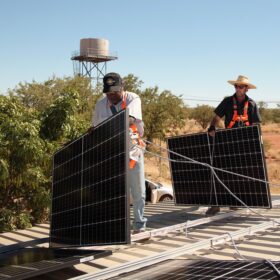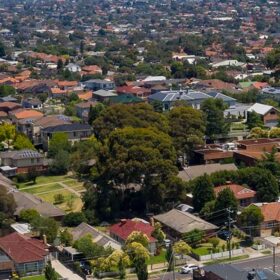The modelling demonstrates that additional demand for clean electricity can be supplied without breaking the grid and will uplift ambition for domestic decarbonisation.
Key points:
- Australia’s abundant renewable energy potential could be used to build a green iron export industry estimated to be worth around $100 billion in 2050.
- However, federally-coordinated investment in renewable energy generation, firming, and transmission capacity is needed.
- The modelling shows that South Australia is a prime location for green iron production, with magnetite iron ore deposits, renewable energy potential, and government ambition for green industry growth.
The Malinauskas Government has made green iron and steel making a central policy objective for the future of the state economy, and as a possible host for COP31 in 2026, South Australia can seize the opportunity to lead the way.
However, meeting the electricity demand for green iron production will require investment across the whole east coast National Electricity Market (NEM), including enhanced interconnection links to ensure that the new electricity requirements of SA’s emerging green iron industry are met as efficiently as possible.
For green aluminium to be economic, it might require Government support beyond existing programs.
Policy recommendations:
- A national roadmap to ensure that green industry ambition is aligned with an appropriate nation-wide plan to deliver the clean energy that is required, including necessary generation, storage and network investment in the Australian National Electricity Market and the West Australian Wholesale Electricity Market.
- Prioritise market-wide whole-of-system planning over disparate state-level planning.
- The Federal Government has an important role in forward planning and coordination of labour, resources and equipment for the transition.
The report builds off previous research from the Superpower Institute that showed that an Australian green iron industry could abate emissions equal to roughly 4 per cent of the global total – more than three times Australia’s current domestic emissions.
“Australia’s clean energy ambitions must extend beyond our domestic needs to power up incredible opportunities in green iron, aluminium and ammonia,” said Richie Merzian, CEO at the Clean Energy Investor Group.
“South Australia has been dealt an incredible hand, with an opportunity to build a world-leading green iron industry while it prepares to potentially host the world’s largest green trade show next year.”
“Australia’s green export opportunities will only come with federal leadership and a concerted effort to remove the roadblocks to ample clean energy. The opportunity is Australia’s for the taking.
“Investors and industry are ready. Australia’s grid will support the additional energy requirements, with the right investment in transmission. What we need is a bold, forward-thinking roadmap from the government to create the kind of certainty that industry needs.”
“With the right policy and investment settings in place, Australia can capitalise on its phenomenal renewable endowment and become a green commodity exporter,” said Peter Sherry, Baringa’s Australia Country Lead.
“Our analysis shows that, provided there is timely and coordinated investment, Australia can meet the increase in clean electricity demand associated with green exports without compromising ambitious domestic decarbonisation.”
“Enhanced interconnection across the NEM will be key to powering South Australia’s green iron industry, as it will enable an unlocking of our exceptional renewable resources across the east coast.”






By submitting this form you agree to pv magazine using your data for the purposes of publishing your comment.
Your personal data will only be disclosed or otherwise transmitted to third parties for the purposes of spam filtering or if this is necessary for technical maintenance of the website. Any other transfer to third parties will not take place unless this is justified on the basis of applicable data protection regulations or if pv magazine is legally obliged to do so.
You may revoke this consent at any time with effect for the future, in which case your personal data will be deleted immediately. Otherwise, your data will be deleted if pv magazine has processed your request or the purpose of data storage is fulfilled.
Further information on data privacy can be found in our Data Protection Policy.